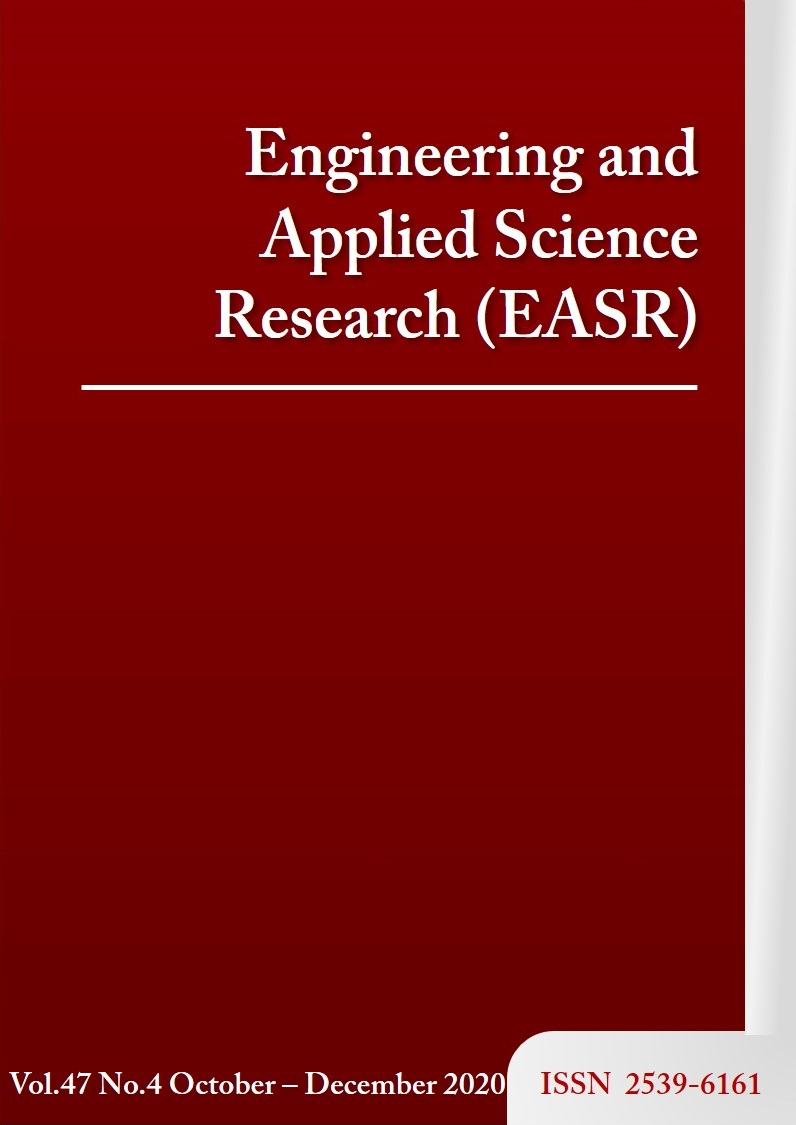Application of a HEC-HMS model on event-based simulations in a tropical watershed
Main Article Content
Abstract
The upper reaches of the Seethawaka River in Sri Lanka lie in the highest rainfall region of the country. The development of a rainfall-runoff model for the Seethawaka River will essentially aid in reducing vulnerability to disasters that happen due to extreme rainfall events in the area. This research paper describes a case study of an event-based streamflow simulation approach for the Seethawaka River in the Kegalle administrative district of Sri Lanka using a conceptually-based, deterministic and semi-distributed Hydrologic Engineering Center-Hydrologic Modeling System (HEC-HMS). The main aim of this study was to examine the most reliable combination of precipitation loss and baseflow methods to simulate streamflow in the study area. Six combinations of precipitation loss methods, direct runoff methods, baseflow methods and routing methods were separately checked to determine the most effective method. Among the various combinations of precipitation loss and baseflow methods simulated, the Soil Conservation Service Curve Number method (SCS_CN) and the non-linear Boussinesq method performed fairly well with Clark unit hydrograph, Muskingum and lag methods. The values of statistical indicators and graphical observations revealed that the model developed through this study is capable of simulating peak discharges and timing the occurrence of peaks fairly well. Therefore, this model will greatly help in providing early warnings to the lower reaches of Seethawaka during extreme rainfall events.
Article Details
This work is licensed under a Creative Commons Attribution-NonCommercial-NoDerivatives 4.0 International License.
References
Maidment DV, Chow VT, Mays LW. Applied hydrology. Singapore: McGraw-Hill; 1988.
Feldman AD. Hydrological modeling system HEC-HMS technical reference manual. Davis, USA: US Army Corps of Engineers, Hydrologic Engineering Center; 2000.
Nandalal H, Ratnayake U. Event based modeling of a watershed using HEC-HMS. Engineer. 2010;43:28-37.
Razi M, Ariffin J, Tahir T, Arish A. Flood estimation studies using hydrological modeling system (HEC-HMS) for Johor River, Malaysia. J Appl Sci. 2010; 10(11):930-39.
De Silva M, Weerakoon S, Herath S. Modeling of event and continuous flow hydrographs with HEC-HMS: case study in the Kelani River Basin, Sri Lanka. J Hydrolog Eng. 2014;19(4):800-6.
Oleyiblo J, Li Z. Application of HEC-HMS for flood forecasting in Misai and Wan'an catchments in China. Water Sci Eng. 2010;3(1):14-22.
Agrawal AA. PREPRO 2004: Data model for with pre and post processor for HEC-HMS [thesis]. Texas: Texas A & M University; 2005.
Song X, Zhang J, Zhan C, Xuan Y, Ye M, Xu C. Global sensitivity analysis in hydrological modeling: Review of concepts, methods, theoretical framework, and applications. J Hydrol. 2015;523:739-57.
Chea S, Oeurng C. Flow simulation in an ungauged catchment of Tonle Sap Lake Basin in Cambodia: application of the HEC-HMS model. Water Util J. 2017;17:3-17.
Chu X, Steinman A. Event and continuous modeling with HEC-HMS. J Irrigat Drain Eng. 2009;135(1): 119-24.
Gebre S. Application of the HEC-HMS model for runoff simulation of Upper Blue Nile River Basin. Hydrol Curr Res. 2015;6(2):1-8.
Knebla M, Yanga Z, Hutchisonb K, Maidment D. Regional scale flood modeling using NEXRAD rainfall, GIS and HEC-HMS/RAS: a case study for the San Antonio River Basin Summer 2002 storm event. J Environ Manag. 2005;75(4):325-36.
Neary V, Habib E, Fleming M. Hydrologic modeling with NEXRAD precipitation in Middle Tennessee. J Hydrolog Eng. 2004;9(5):339-49.
Ouedraogo W, Raude J, Gathenya J. Continuous modeling of the Mkurumudzi river catchment in Kenya using HEC-HMS conceptual model: calibration, validation, model performance evaluation and sensitivity analysis. Hydrology. 2018;5(3):1-18.
Pingel N, Jones C, Ford, D. Estimating forecast lead time. Nat Hazards Rev. 2005;6(2):60-6.
Skhakhfa I, Ouerdachi L. Hydrological modeling of Wadi Ressoul Watershed, Algeria by HEC-HMS model. J Water Land Dev. 2016;31:139-47.
Halwatura D, Najim M. Application of the HEC-HMS model for runoff simulation in a tropical catchment. Environ Model Software. 2013;46:155-62.
Sampath D, Weerakoon S, Herath S. HEC-HMS model for runoff simulations in a tropical catchment with intra-basin diversions: case study of the Deduru Oya River Basin, Sri Lanka. Engineer. 2015;48(1):1-9.
Ratnayake U, Sachindra D, Nandalal K. Rainfall forecasting for flood prediction in Nilwala Basin. Proceedings of the international symposium on coastal zone and climate change: assessing the impacts and developing adaptation strategies; 2010 Apr 12-13; Monash University, Australia.
Ponce VM, Hawkins RH. Runoff curve number: Has it reached maturity? J Hydrolog Eng. 1996;1(1):11-9.
Bastiaanssen WG, Chandrapala L. Water balance variability across Sri Lanka for assessing agricultural and environmental water use. Agr Water Manag. 2003;58(2):171-92.
Goonathilake SA, Perera N, Silva GD, Weerakoon D, Mallawathanthri A. Natural resources profile: medium to long-term multi-stakeholder strategy and action plan for management and conservation of the Kelani River Basin 2016-2020. Colombo: International Union for Conservation of Nature Sri-Lanka Country Office and Central Environmental Authority; 2016.
FAO & IIASA. Harmonized World Soil Database [Internet]. 2012 [Cited 2019 April 3]. Available from:
http://webarchive.iiasa.ac.at/Research/LUC/External-World-soil-database/HTML/.
Scharffenberg B, Bartles M, Brauer M, Fleming M, Karlovitas G. Hydrological modeling system HEC-HMS, user’s manual. Davis, USA: US. Army Corps of Engineers, Hydrologic Engineering Center HEC; 2018.
Shakti PC, Nakatani T, Misumi, R. The role of the spatial distribution of radar rainfall on hydrological modeling for an urbanized river basin in Japan. Water. 2019;11(8):1-25.
Scharffenberg WA. Hydrological modeling system (HEC-HMS user’s manual (Ver 4.2). Davis, USA: US
Army Corps of Engineers, Hydrologic Engineering Center HEC; 2016.
US Army Corps of Engineers. Engineer Manual EM-1100-2-1417, Engineering and Design, Flood Runoff Analysis. Washington: Department of Army, US Army Corps of Engineers; 1994.
Clark C. Storage and the unit hydrograph. Trans Am Soc Civil Eng. 1945;110(1): 1419-46.
Kirpich ZP. Time of concentration of small agricultural watersheds. J Civ Eng. 1940;10(6):362.
Overton DE, Brakensiek DL. A kinematic method of surface runoff response. Symposium on the Results of Research on Representative and Experimental Basins; 1970; Wellington, New Zealand. p. 100-12.
Moriasi D, Arnold JG, Van Liew MW, Binger RL, Harmel RD, Veith TL. Model evaluation guidelines for systematic quantification of accuracy in watershed simulations. Transactions of ASABE. 2007;50:885-900.



